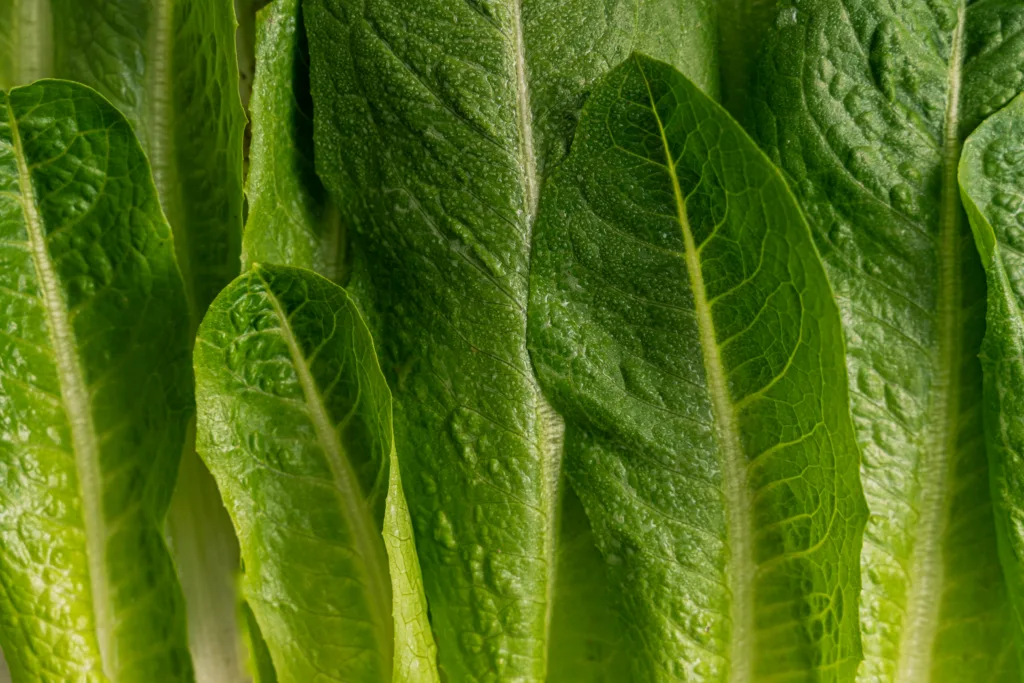Is Romaine Lettuce Low FODMAP?
Are you looking for a low-FODMAP food that can provide you with essential vitamins and minerals? Are you trying to find out if Romaine lettuce is a low-FODMAP food for your diet?
This article provides all the information needed to answer the question “Is Romaine Lettuce Low FODMAP?” We will take a look at the nutrition facts of Romaine lettuce, as well as the benefits of adding it to your diet. We will also discuss which FODMAPs are found in Romaine lettuce, and how much of them is present in each serving. Finally, we will go over some tips on how to incorporate Romaine lettuce into your diet without compromising on flavor.
So if you want to make sure that you’re eating a low-FODMAP food that can provide essential vitamins and minerals, then keep reading!
Yes, Romaine lettuce is low FODMAP. It does not contain any of the high FODMAP ingredients and can be included in a low FODMAP diet.
What is FODMAP?
FODMAP stands for Fermentable Oligosaccharides, Disaccharides, Monosaccharides, and Polyols. It is a type of carbohydrate that can be found in many foods. FODMAPs are not easily absorbed by the body, which can lead to digestive issues for some people. People with irritable bowel syndrome (IBS) may find that following a low-FODMAP diet helps alleviate symptoms like abdominal pain, bloating, and gas.
The low-FODMAP diet involves avoiding foods that contain high levels of FODMAPs such as garlic, onions, wheat, apples, pears, peaches and certain dairy products. By reducing your intake of these foods you can help reduce your symptoms. It is important to note that everyone’s tolerance for FODMAPs will be different and it is best to work with a registered dietitian or healthcare professional to determine which foods you should be avoiding.
The low-FODMAP diet has been studied extensively and has been proven to be effective in helping people manage their IBS symptoms. However, it is important to note that it is not meant to be a long-term solution and should only be used as a way to identify trigger foods so that you can make informed decisions about what you eat going forward.
What is Low FODMAP Diet?
The Low FODMAP Diet is a specialized eating plan designed to reduce symptoms of irritable bowel syndrome (IBS) and other digestive disorders. It is based on research showing that certain types of carbohydrates, known as fermentable oligosaccharides, disaccharides, monosaccharides and polyols (FODMAPs), can trigger symptoms such as abdominal pain, bloating and gas in people with IBS. The diet eliminates high-FODMAP foods and gradually reintroduces them to determine which foods are well tolerated. The goal of the diet is to enable people to eat a wide variety of healthy foods while minimizing their symptoms.
Click here to preview your posts with PRO themes ››
The Low FODMAP Diet was developed by researchers at Monash University in Australia. It has been studied extensively and is recommended by gastroenterologists and registered dietitians as an effective way to manage IBS symptoms. A recent meta-analysis found that the diet improves IBS symptoms in up to 76% of people who follow it, making it one of the most effective treatments for IBS currently available.
What are the Benefits of a Low FODMAP Diet?
A low FODMAP diet has many potential benefits for people with digestive issues such as irritable bowel syndrome (IBS). The main benefit of the diet is that it eliminates certain foods that are known to cause digestive distress, allowing your gut to heal and reducing symptoms such as bloating, abdominal pain, and diarrhea. Additionally, a low FODMAP diet can help improve overall gut health by encouraging a diverse population of beneficial bacteria in the gut. This can improve digestion and nutrient absorption, reduce inflammation, and boost your immune system.
Another potential benefit of a low FODMAP diet is weight loss. By eliminating certain high-FODMAP foods from your diet, you may be able to reduce your overall calorie intake while still feeling full. Research has shown that following a low-FODMAP diet can lead to improved satiety and reduced cravings. This can help you maintain a healthy weight over time.
Finally, following a low FODMAP diet may help reduce symptoms associated with other digestive disorders such as Crohn’s disease or celiac disease. Eliminating high-FODMAP foods from your diet can lower inflammation levels in the gut, which may reduce symptoms associated with these conditions. Additionally, it can also help improve nutrient absorption by improving the diversity of beneficial bacteria in the gut.
In summary, there are many potential benefits to following a low FODMAP diet including improved digestion and nutrient absorption; weight loss; and reduced symptoms associated with digestive disorders. With proper planning and guidance from a healthcare professional, you can safely follow this type of diet to get the most benefit for your health.
Romaine Lettuce Ingredients
Romaine lettuce is a dark leafy green vegetable that has a crunchy texture and a slightly bitter taste. It is an excellent source of vitamins and minerals, including vitamins A, C, K, and folate. Romaine lettuce also contains dietary fiber, iron, magnesium, potassium, calcium, and phosphorus. In addition to these essential nutrients, romaine lettuce also contains polyphenols which are antioxidants that can help protect the body from damage caused by free radicals. Furthermore, it is low in calories and fat-free making it an ideal ingredient for salads or as a side dish for meals.
Romaine lettuce is a great source of dietary fiber which helps to keep the digestive system healthy. Fiber helps to slow down the digestion process thus preventing blood sugar spikes after meals. Additionally, it helps to keep one feeling fuller for longer periods of time which can aid in weight management. Furthermore, the dietary fiber found in romaine lettuce can help reduce cholesterol levels by binding with bile acids in the intestines and aiding their excretion from the body.
Click here to preview your posts with PRO themes ››
Romaine lettuce also contains phytonutrients such as lutein and zeaxanthin which are carotenoids known to help protect eye health. They are thought to protect against age-related macular degeneration (AMD) which is a leading cause of vision loss in older adults. Furthermore, lutein and zeaxanthin may also help reduce the risk of certain types of cancer such as colon cancer.
Overall, romaine lettuce is an excellent ingredient for salads or side dishes due to its nutritional profile and low calorie content. It provides many essential vitamins and minerals as well as dietary fiber, phytonutrients such as lutein and zeaxanthin which can help protect eye health and reduce the risk of certain types of cancer such as colon cancer.

Is Romaine Lettuce High in Fructans?
Romaine lettuce is a popular variety of lettuce that is widely consumed around the world. It is a good source of several essential vitamins and minerals, including Vitamin A, Vitamin C, potassium, and folate. It also contains a type of carbohydrate known as fructans. Fructans are found in many vegetables and fruits, and are known to have prebiotic properties that can help to promote the growth of beneficial bacteria in the gut.
Studies have shown that romaine lettuce does contain fructans, although the exact amount will vary depending on the variety and growing conditions. In general, romaine lettuce tends to have higher levels of fructans than other types of lettuce such as iceberg or butterhead. The amount of fructans can also be affected by how long it is stored or cooked before consumption.
While some people may need to limit their intake of high-fructose foods due to digestive issues such as irritable bowel syndrome (IBS), there is no need for most people to totally avoid romaine lettuce due to its fructan content. Eating romaine lettuce in moderation is unlikely to cause any problems for most people, and it provides many important vitamins and minerals that are essential for good health.
If you do have IBS or another digestive disorder, it may be helpful to track your intake of high-fructose foods like romaine lettuce so that you can monitor how well your body responds when you consume them. Eating a wide variety of fruits and vegetables is important for overall health, so don’t feel like you need to completely avoid romaine lettuce if it’s something you enjoy eating!
Is Romaine Lettuce High in Galacto-Oligosaccharides (GOS)?
Romaine lettuce is a nutrient-rich vegetable that is high in dietary fiber and essential vitamins and minerals. It also contains galacto-oligosaccharides (GOS), a type of prebiotic carbohydrate that has been linked to improved digestive health. GOS are found naturally in some plant foods such as oats, barley, legumes, and certain fruits, but romaine lettuce has the highest concentration of GOS among the commonly eaten leafy greens. Studies have shown that GOS can help promote the growth of beneficial gut bacteria, which can help improve digestive health and reduce the risk of certain diseases. Furthermore, GOS may also help reduce cholesterol levels and improve blood sugar control. For these reasons, incorporating romaine lettuce into your diet may be beneficial for your overall health.
Click here to preview your posts with PRO themes ››
Are There Any Low FODMAP Serving Sizes for Romaine Lettuce?
Romaine lettuce is a popular ingredient in salads, sandwiches, and wraps. It is also a good source of vitamins and minerals. Unfortunately, Romaine lettuce can be high in FODMAPs, which can cause digestive distress for those with IBS or other digestive sensitivities. Fortunately, there are some low FODMAP serving sizes for Romaine lettuce that can help you enjoy the vegetable without triggering symptoms.
The recommended low FODMAP serving size for Romaine lettuce is one cup of chopped leaves or 1/2 cup when shredded. This amount is considered to be low in FODMAPs and should not cause digestive discomfort. For those who are extra sensitive to FODMAPs, it may be best to stick to this serving size or even smaller amounts. Additionally, it is important to note that Romaine lettuce becomes more high in FODMAPs as it matures so it’s best to select younger leaves when possible.
When cooking with Romaine lettuce, it’s important to keep the cooking time short as overcooking can cause the nutrients in the vegetable to break down and potentially increase the FODMAP levels. Additionally, you should avoid adding any high-FODMAP ingredients such as garlic or onions as these will increase the overall FODMAP load of the dish.
In summary, if you are looking for a low-FODMP serving size of Romaine lettuce, one cup of chopped leaves or 1/2 cup shredded should be enough to enjoy without triggering digestive symptoms. It’s also important to select younger leaves when possible and avoid adding any high-FODMP ingredients when cooking with this vegetable.

Conclusion
Romaine lettuce is generally considered a low FODMAP food. It contains only small amounts of the FODMAPs fructose and oligosaccharides, and the majority of its carbohydrates come from lactose, which is a non-FODMAP sugar. However, people with IBS should still be cautious when consuming romaine lettuce. Eating large amounts of it could cause digestive distress in some people as it contains some FODMAPs. Additionally, people with IBS may be particularly sensitive to any type of food, even those that are considered ‘safe’.
It is important to remember that everyone’s tolerance for different foods is different. If you have IBS and want to include romaine lettuce in your diet, start by eating small amounts at first to see how your body responds before increasing your intake. Additionally, be sure to pay attention to how you feel after eating romaine lettuce, and avoid it if it causes any digestive symptoms.

